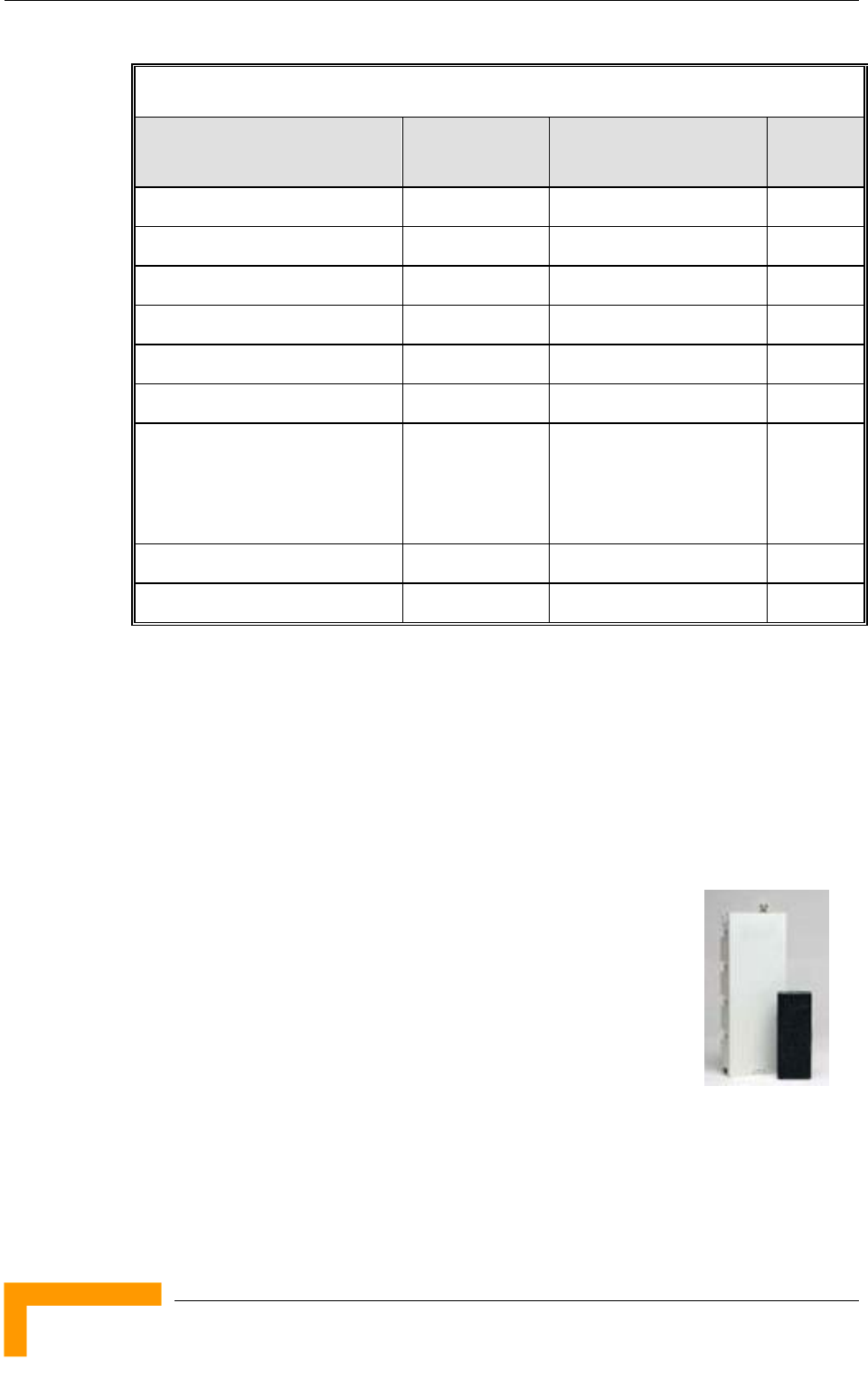
Chapter 1 - System Description
BreezeACCESS VL System Manual
6
Table 1-3: AU Antennas
Antenna Band (MHz) Horizontal Beam Width Gain
(dBi)
AU-Ant-5G-16-60 5150-5875 60° 16
AU-Ant-5G-17-90 5150-5875 90° 17
AU-Ant-5G-15-120 5150-5875 120° 15
AU-Ant-4.9G-15-120 4900-5100 120° 15
AU-Ant-4.9G-9-Omni 4900-5100 360° 9
AU-Ant-5.8G-8-Omni 5725-5875 360° 8
AU-Ant 5.8G-14-120-UK
(The antenna pattern complies
with Ofcom’s IR 2007 EIRP
profiles)
5725-5850 120° 14
AU-Ant-0.9G-V/H-10-90 902-928 90° 2x10
AU-Ant-0.9G-7-Omni 902-928 360° 7
The BS-AU indoor module connects to the network through a standard IEEE
802.3 Ethernet 10/100BaseT (RJ 45) interface. The indoor module is connected
to the outdoor unit via a Category 5E Ethernet cable. This cable carries Ethernet
traffic between the indoor module and the outdoor unit, and also transfers power
(54 VDC) and control from the indoor module to the outdoor unit.
1.2.2 Standalone “Micro-cell” Access Unit
The standalone AU-E-SA Access Unit is very similar to the AU-E-BS unit. The
difference is in the structure of the indoor part; in the AU-E-
SA Access Unit the indoor unit is a standalone desktop or
wall-mountable unit (the same Universal IDU that is also used
in the SU) rather than a 19” module.
There are two types of Standalone Access Units, differing in
the maximum number of Subscriber Units that they can serve:
The AU-SA Access Unit can serve up to 512 Subscriber
Units (124 when Data Encryption is used).
The AUS-SA Access Unit can serve up to 8 SUs except SU-54 (refer to section
1.3 for details on availability of SU types in different bands). Optionally, it


















